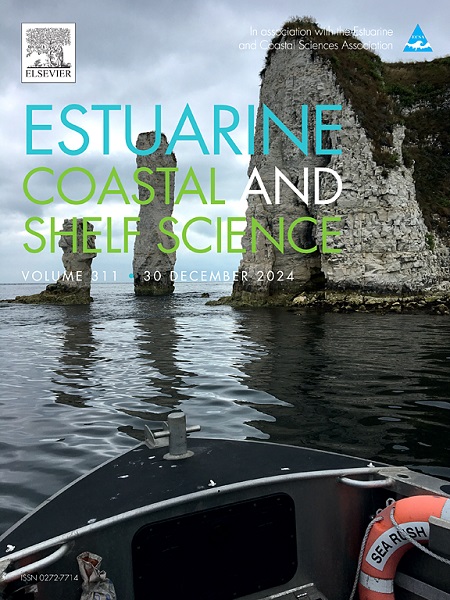在最后的遗传储存库之一中,整个地中海的大尾海螺的大量死亡尚未影响到该物种的遗传多样性
IF 2.6
3区 地球科学
Q1 MARINE & FRESHWATER BIOLOGY
引用次数: 0
摘要
评估濒危物种的遗传保护状况对加强濒危物种的恢复和实施有效的管理至关重要。nobilis Pinna nobilis是一种地中海特有物种,自2016年以来面临反复出现的大规模死亡事件,目前处于极度濒危状态。少数未受影响或部分受影响的贵族P. nobilis个体居住在孤立的沿海泻湖和河口,但它们的遗传状况和适应未来威胁的能力仍然未知。本研究首先利用一组21个微卫星位点和284个个体,对Mar Menor沿海泻湖残余的P. nobilis类群的遗传多样性和结构进行了评估,从而解决了这些空白。然后将其与以前来自Cabrera国家公园的密集和稳定的P. nobilis群体进行比较,使用一套共同的19个微卫星标记和来自总共1055个个体的非致死地幔组织活检。结果揭示了Mar Menor内不同位置的遗传同质性,表明泻湖内有一个单一的,同质的群体。值得注意的是,Mar Menor的遗传多样性与现已灭绝的Cabrera国家公园的P. nobilis类群相当。尽管整个物种的死亡事件,来自Mar Menor的小而封闭的个体群体保留了大约80%的卡布雷拉国家公园的物种遗传多样性,并拥有16个独特的等位基因。这些发现强调了Mar Menor泻湖目前作为nobilis遗传库的重要作用,强调了加强保护的必要性。考虑到这些结果,来自Mar Menor的个体可以作为未来西地中海物种重新引入计划的潜在候选者。本文章由计算机程序翻译,如有差异,请以英文原文为准。
The mass mortality of Pinna nobilis throughout the Mediterranean Sea has not yet affected the genetic diversity of the species in one of the last genetic reservoirs
Assessing the genetic conservation status of threatened species is crucial for enhancing their recovery and launch effective management. Pinna nobilis, a Mediterranean endemic species facing recurrent mass mortality events since 2016, is now critically endangered. The few unaffected or partially affected P. nobilis groups of individuals reside in isolated coastal lagoons and estuaries, but their genetic status and ability to adapt to future threats remains unknown. This study addresses these gaps by first assessing the genetic diversity and structure of the remnant P. nobilis group from the Mar Menor coastal lagoon using a set of 21 microsatellites loci and 284 individuals. It then compares this with the previously dense and stable P. nobilis group of individuals from Cabrera National Park, using a common set of 19 microsatellite markers and non-lethal mantle tissue biopsies from a total of 1055 individuals. The results reveal genetic homogeneity across different locations within the Mar Menor, suggesting a single, homogeneous group within the lagoon. Remarkably, the genetic diversity in Mar Menor is comparable to that of the now-extinct Cabrera National Park P. nobilis group. Despite the species-wide mortality events, the small, enclosed group of individuals from Mar Menor retain approximately 80% of Cabrera National Park's species genetic diversity and possesses 16 unique alleles specific to this lagoon. These findings underscore the crucial current role of Mar Menor lagoon as a genetic reservoir for P. nobilis, emphasizing the need for strong protection. Considering these results, individuals from the Mar Menor could serve as potential candidates for future species reintroduction programs in the western Mediterranean Sea.
求助全文
通过发布文献求助,成功后即可免费获取论文全文。
去求助
来源期刊
CiteScore
5.60
自引率
7.10%
发文量
374
审稿时长
9 months
期刊介绍:
Estuarine, Coastal and Shelf Science is an international multidisciplinary journal devoted to the analysis of saline water phenomena ranging from the outer edge of the continental shelf to the upper limits of the tidal zone. The journal provides a unique forum, unifying the multidisciplinary approaches to the study of the oceanography of estuaries, coastal zones, and continental shelf seas. It features original research papers, review papers and short communications treating such disciplines as zoology, botany, geology, sedimentology, physical oceanography.

 求助内容:
求助内容: 应助结果提醒方式:
应助结果提醒方式:


